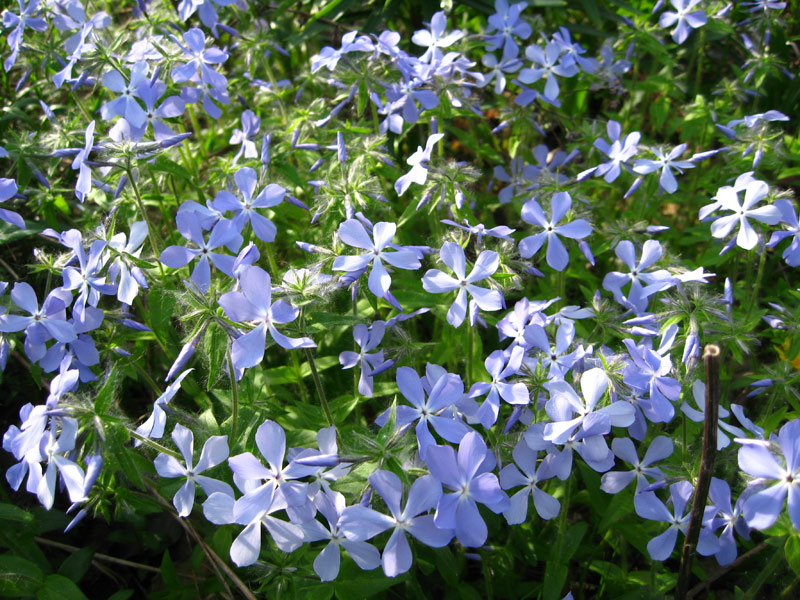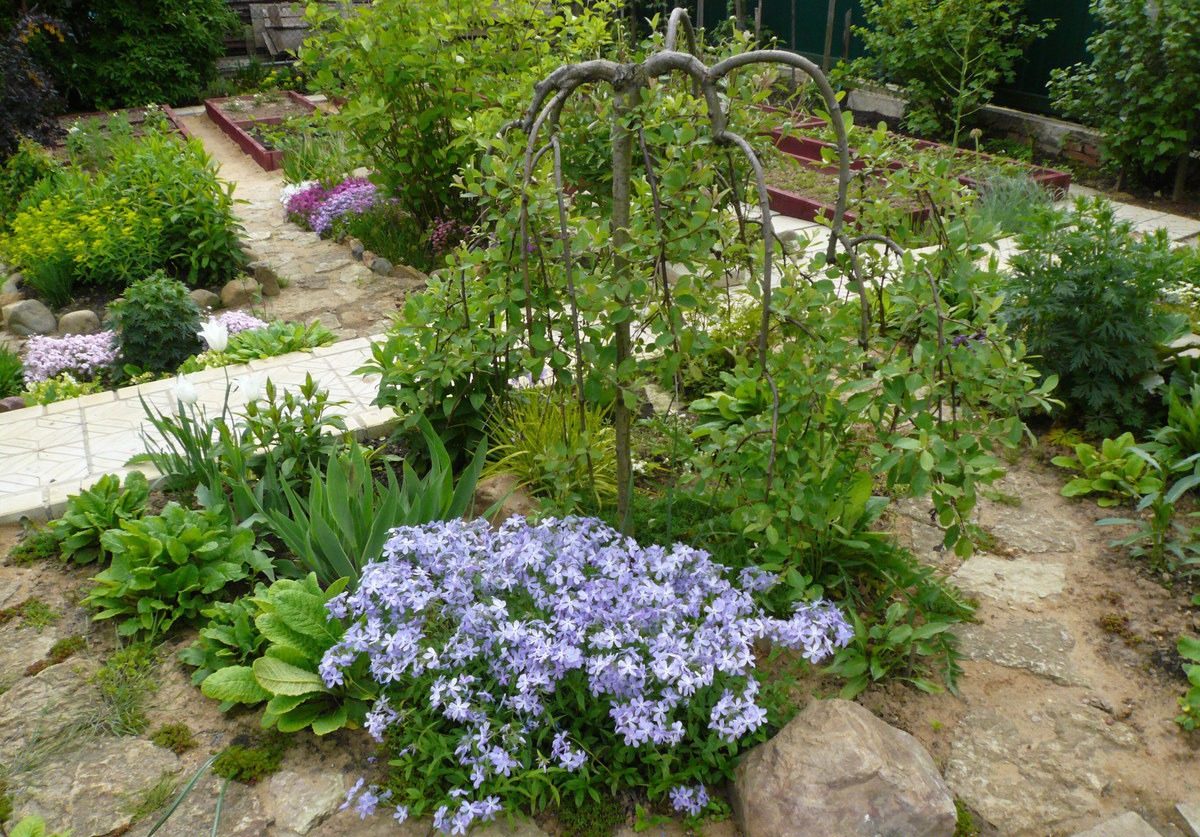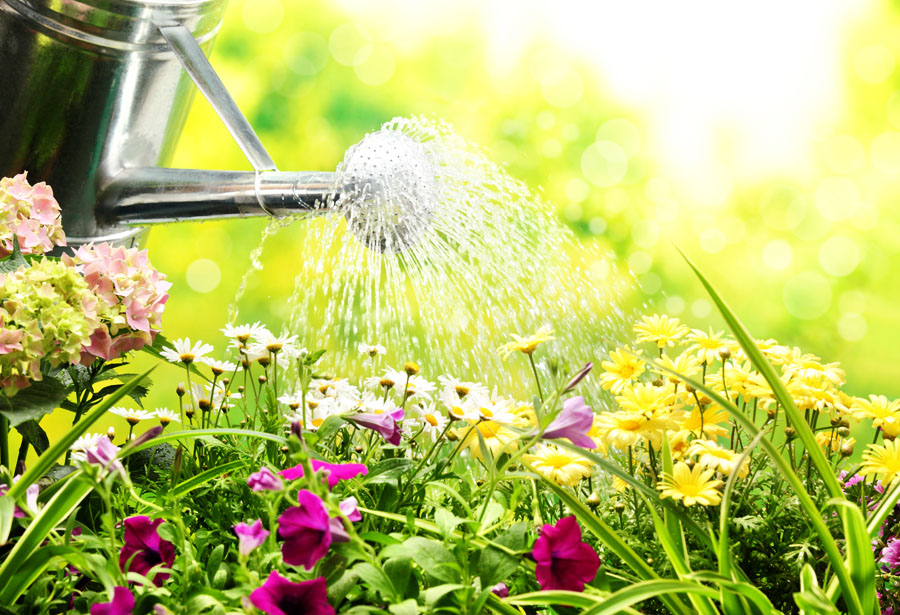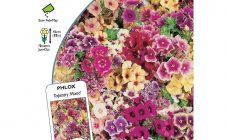Content:
Phlox are beautiful flowers that delight with a long flowering period. Large inflorescences, fragrant with aroma, various shades of flowers, undemanding care - just a dream for every summer resident. Plants will be in place everywhere. However, if we talk about comfort for the flower itself, it should be provided with a special soil and sufficient lighting. What you need to know for successful planting and growing a plant, how to properly provide proper care, what varieties of varieties exist and what is suitable for a flower garden will be discussed in this article.
Description of the variety
Split phlox (Latin Phlox Divaricata) is a short-growing plant with elongated 20-centimeter stems. The length of the leaves can reach 40 cm. The highlight of this phlox variety is in the shoots that grow, spread along the ground and form a turf. Inflorescences are loose.
Plants of this species are presented in various shades. You can often find splayed phlox lavender blue, blue or pink. Less common are pale lilac, pink, light purple, white flowers. Thanks to this color scheme, it is quite easy to distinguish them from their “relatives”. In addition, they are distinguished by the shape of the petals: the wide edges smoothly pass to the core, narrowing and forming a bundle or tube.
The diameter of a fully blossoming flower is 5 cm. You can see the beauty pleasing to the eye in late spring. Flowering continues until mid-summer. The oblong-ovoid leaves are slightly inclined downward, reaching a length of 5 cm. The peculiarity of the splayed phlox is the arrangement of the flower corollas.
Floral nectar forms at the base of the corollas. Only bees with a long proboscis, bloodworms, butterflies can get it. Those insects with short proboscis consume pollen. Insects feeding on the nectar of the flower contribute to the cross-pollination of the plant, as it is unable to produce it on its own.
Place for planting a flower
Plants are good for their unpretentiousness, ease of planting and care. But in order to transform your summer cottage by creating a beautiful flower garden, you need to provide the best conditions for phlox. First of all, it is worthwhile to correctly determine the landing site, paying special attention to the quality of the soil and the illumination of the place. How to do this is detailed below.
Lighting
In order for phlox to please with their cheerfulness and bright inflorescences, it is necessary to find a place with a sufficient level of lighting. In the most extreme version, partial shade is suitable. It is not recommended to plant in a shaded place: the aesthetics of the flower will disappear. The less light the plant receives from the sun, the more its flowers become paler, more inconspicuous, and the inflorescences become friable.
Experienced flower growers note that growing phlox in illuminated areas contributes to long-term flowering, increasing its interval by a decade.
Care rules
All that is necessary is to remove weeds from the flower bed in a timely manner, to loosen the soil, water when the soil is dry, sometimes fertilize, and remove the tops. Despite the ease of maintenance, the plant should be properly cultivated. How to do this is described below.
Watering
Taking into account the peculiarities of the homeland of the splay phlox (eastern United States, Canada), regular moistening of the planting site is carried out. The plant does not require a lot of water, since its root system is located close to the surface of the earth, but frequent watering is desirable.
It is important not to overdo it here. In case of waterlogging, the plant will rot. To prevent this from happening, it is important to observe the measure, monitoring the condition of the soil. If it is dry, then you can safely water it. Great attention should be paid to the flower during dry periods.
Top dressing
It is easy to influence the volume and density of inflorescences. It is necessary to carry out regular feeding of the plant. This should be done throughout the growing season. Among the nutrients, both organic and inorganic fertilizers are recommended. Before the beginning of the summer period, the plant is watered with a solution of infused chicken droppings - for 10 liters of water, 25 grams are required. The next fertilizer is applied to the soil in two weeks.
Then apply mineral fertilizer for feeding: superphosphate, potassium salt. At the beginning and at the end of July, top dressing is carried out with a clean solution. To do this, you need to make a mixture of fluorine and potassium salt. Nitrogen is highly discouraged because it leads to overgrowth of greenery. For a good wintering, the plant does not need this.
Pruning
People who have just started doing floriculture are biased towards pruning, considering it unnecessary. In fact, it is necessary. This is an important action that can prevent the formation of harmful microorganisms. Pruning only benefits the flowers, promoting plant health and increasing the amount of nutrients in the roots.
Experienced gardeners advise cutting off parts of the plant near the ground - this minimizes the likelihood of damage to the stems. There are those who advise leaving the 10-centimeter "columns" above the ground to ensure snow retention. Everyone can choose from these two methods any they like. Both of them will not harm the plants. Only it is necessary to remove the cut stems from the front garden and burn them, and treat the cuts with a fungicide.
Reproduction of phlox
Seeds
Seed propagation is quite difficult, even for an experienced grower, but it's worth a try. Disadvantages of this breeding method: painstaking process, long in time, loss of the characteristics of the variety. Pros - good germinal adaptation.
To start breeding, the seeds themselves must be available. The easiest way to get them is from a specialized store. It can be grown if desired, although it is laborious. In case of unsuccessful pollination, seeds are collected from withering foliage.
Sow the seeds in open soil. It is possible in pre-prepared containers, which gives a better chance of achieving the desired result. In a greenhouse, the probability of germination and development of sprouts increases.
For reproduction, a special mixture for soil is prepared, plastic containers. To prepare the mixture, take in equal amounts a little river sand and humus, deciduous soil and peat. It is enough to deepen the seeds into the ground by 1.5-2 cm. In April or May, the seedlings are transplanted to the planned place for plant growth. A warm climate must be established for disembarkation.
Cuttings
May is ideal for propagation by cuttings. In late spring, the stems are especially strong.
After the harvested sprout is planted in prepared, moistened soil. It is recommended to cover the top with a warm film, imitating the greenhouse environment. After 30 days, the cuttings will have strong, strong roots.
Diseases and pests
Phloxes are refined and rather delicate plants. This can be used by such pests as slugs, aphids, spider mites, etc. The attack is mainly carried out on weak, decaying plants. For rescue, conventional pest control products containing chemicals are used. You can find them at any gardening store.
If you properly take care of the flower, taking into account the features of the Phlox spread out above, then the planted plant will delight with its lush flowering in the garden or in the yard near the house.
















